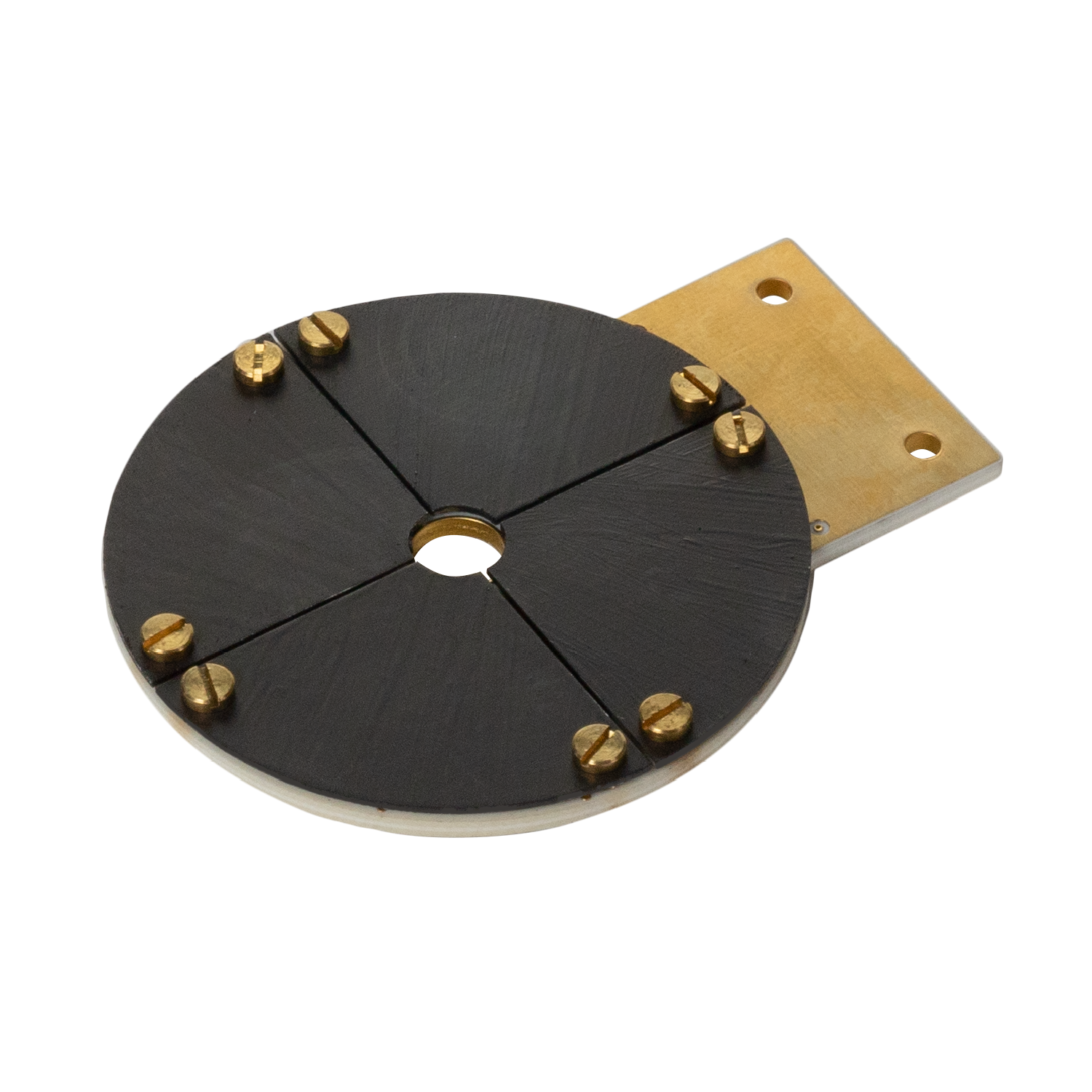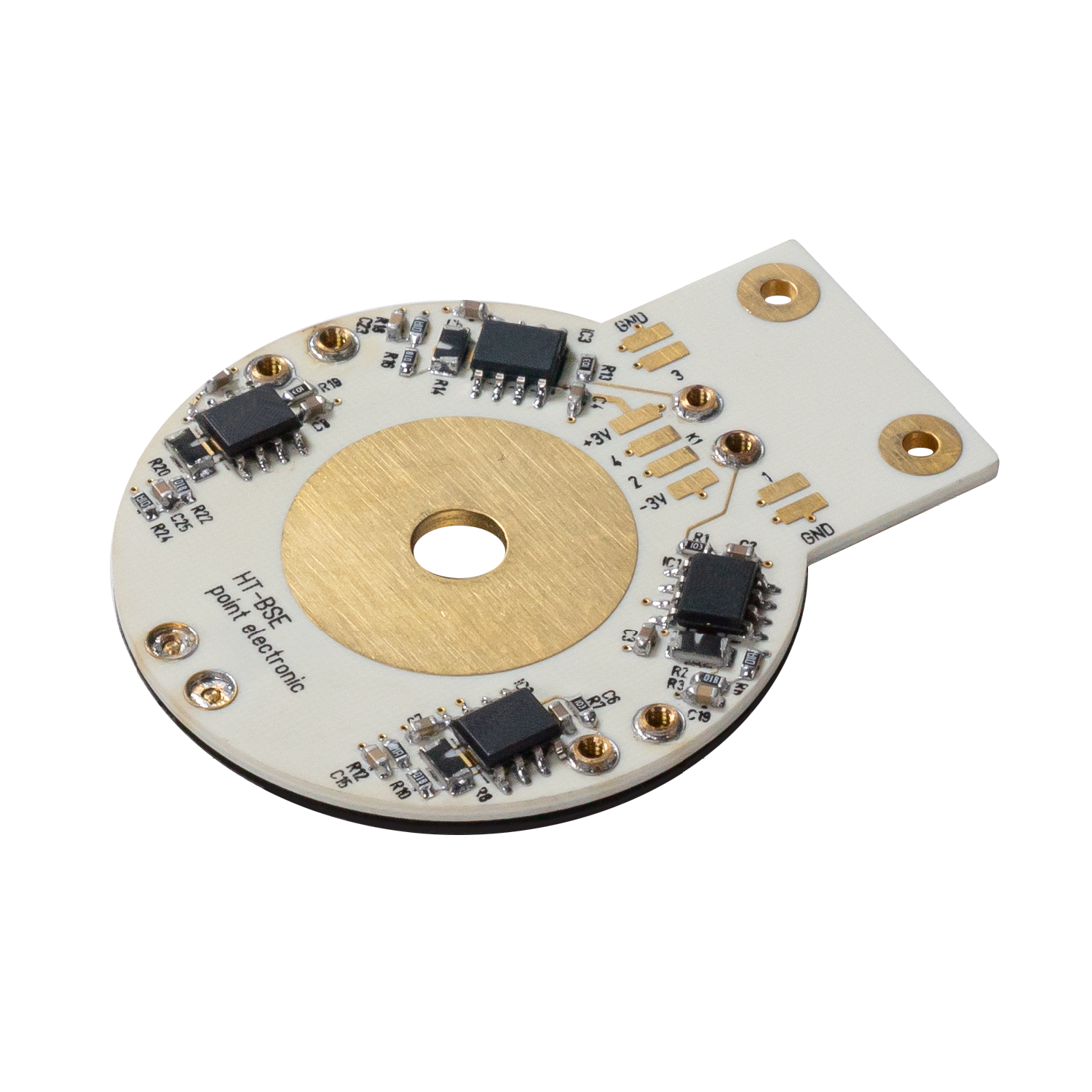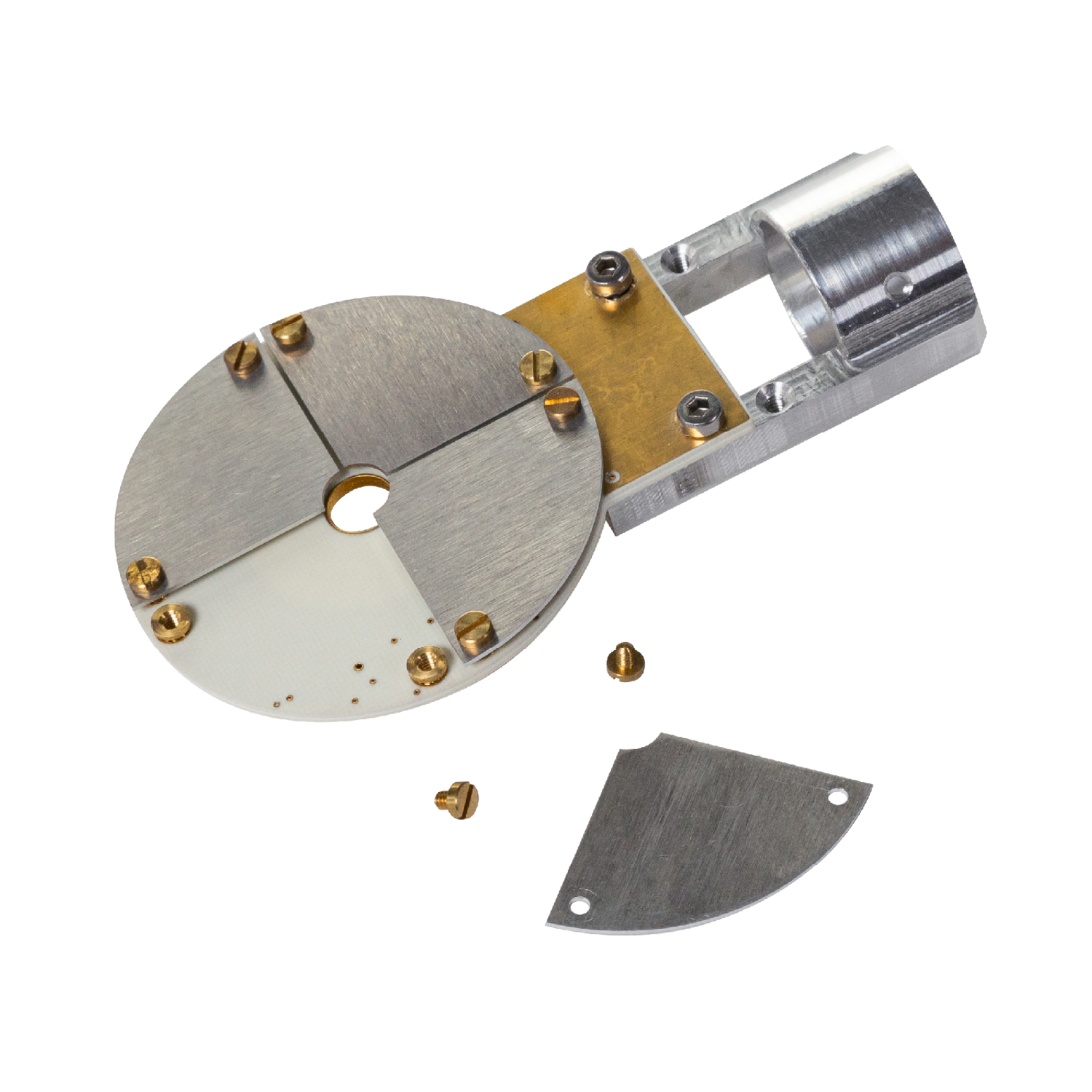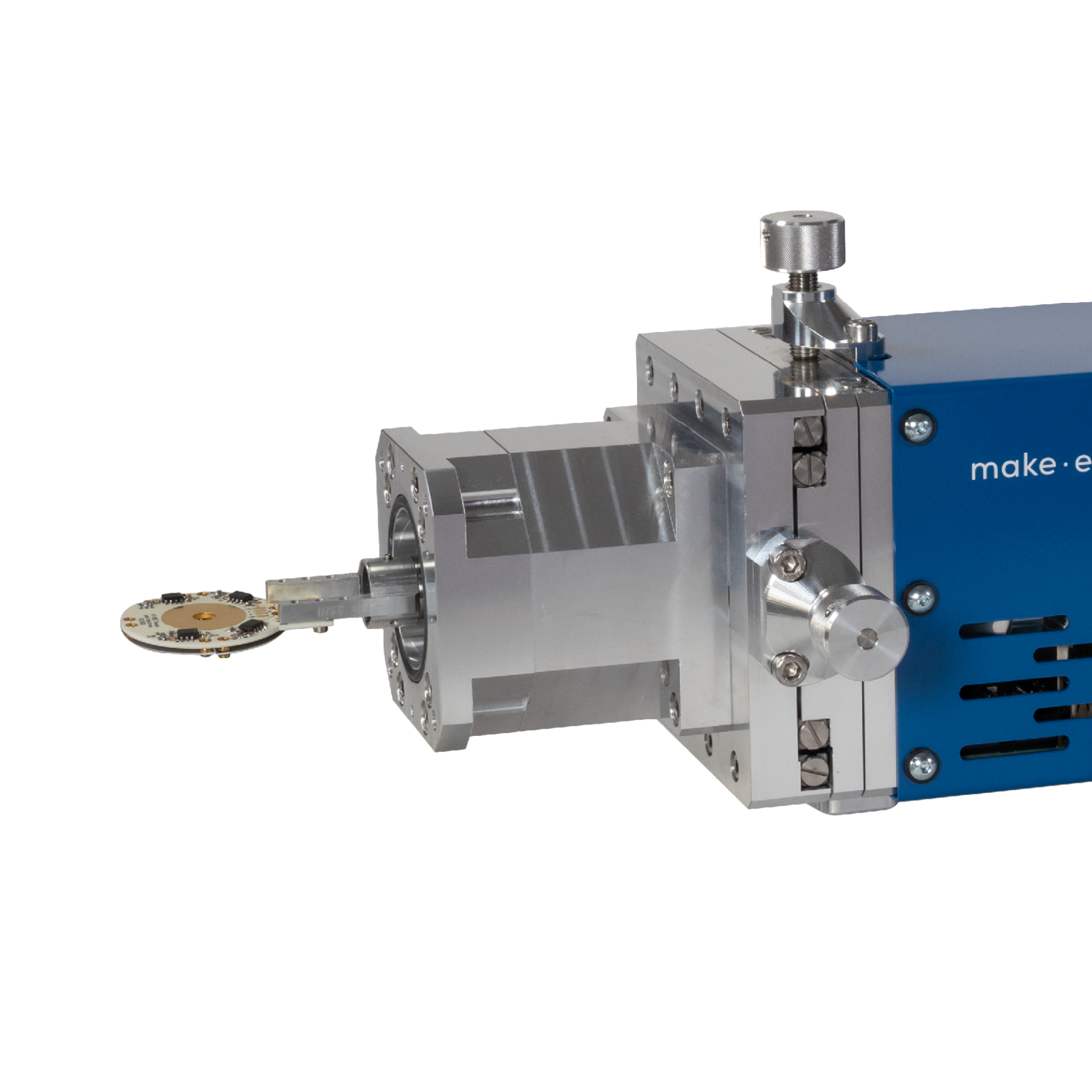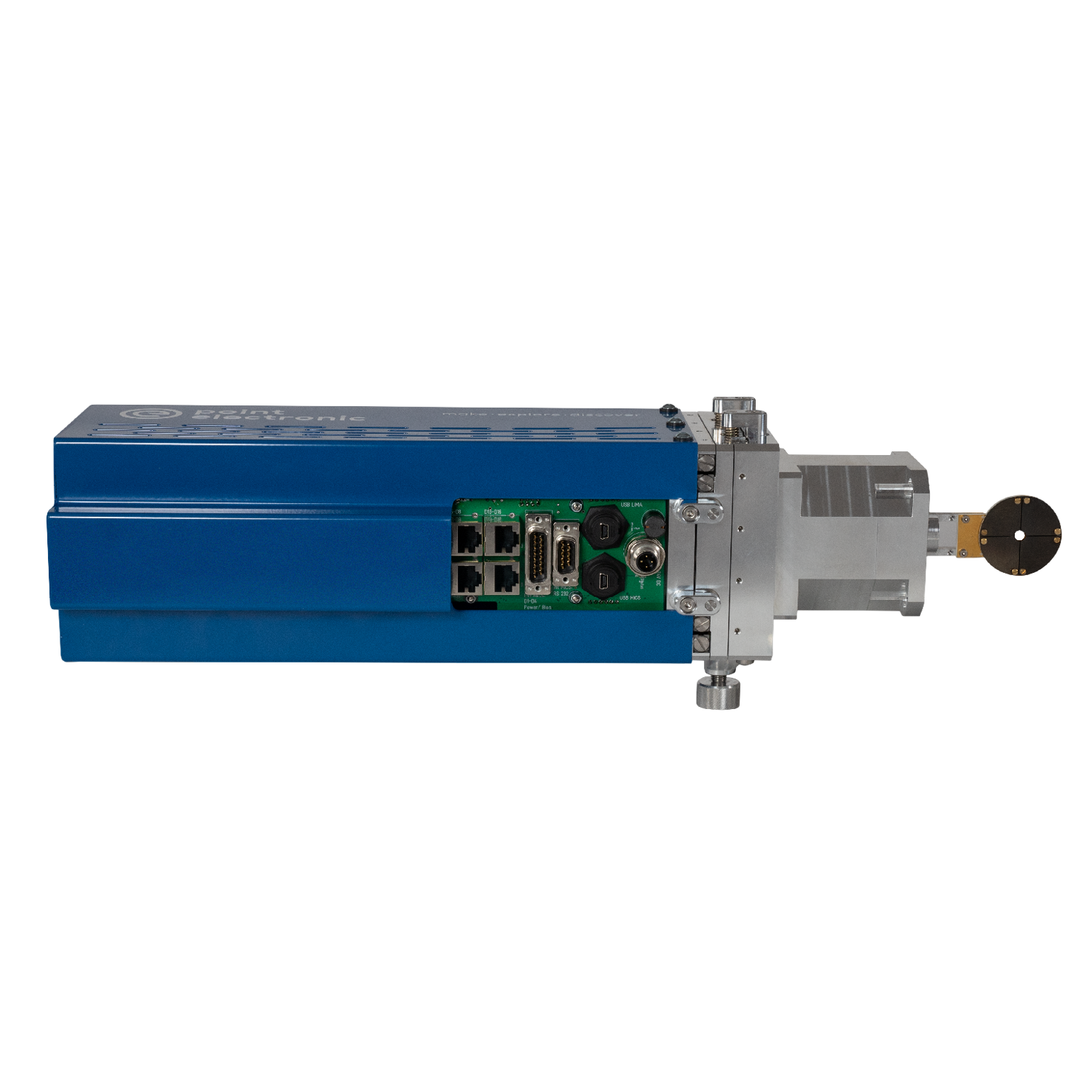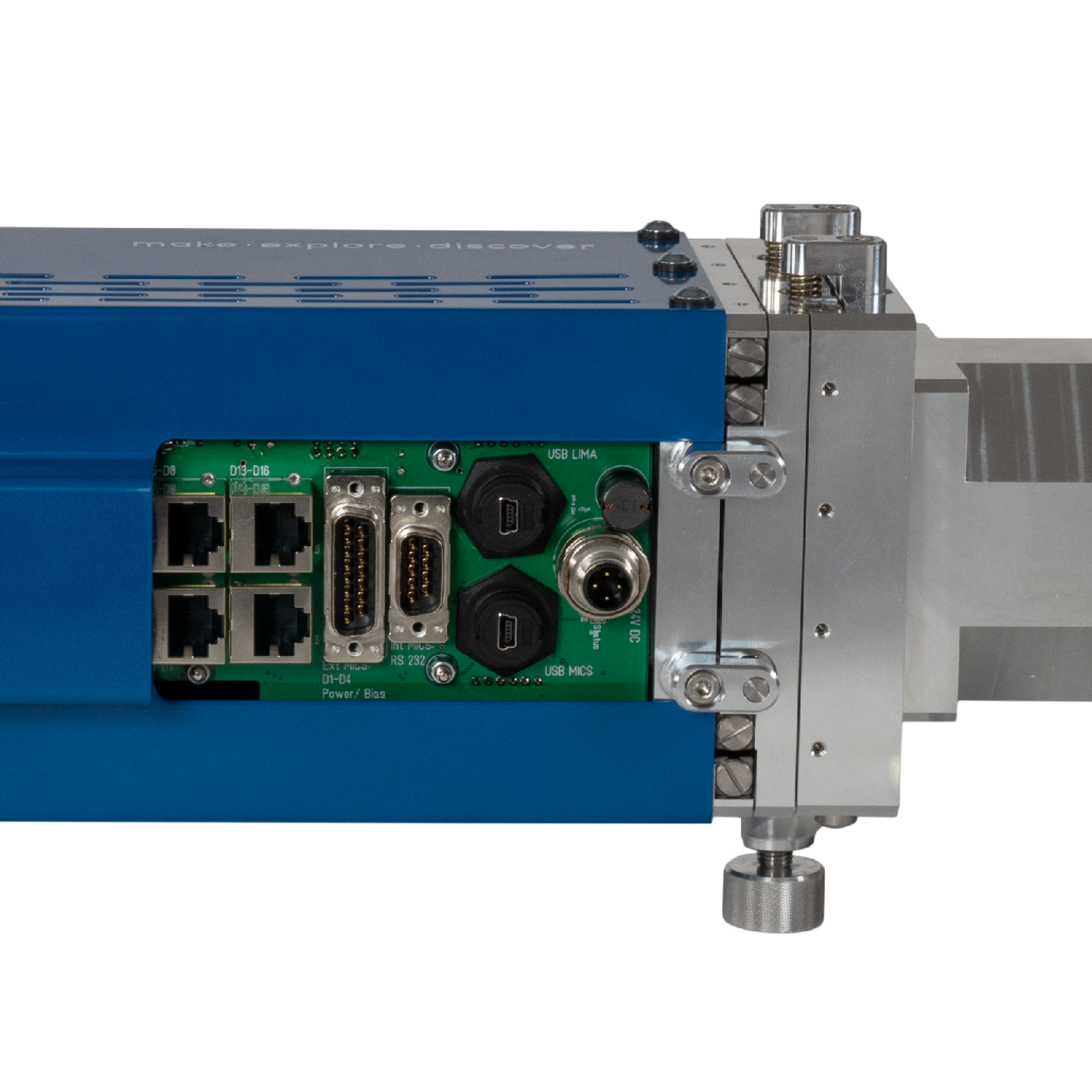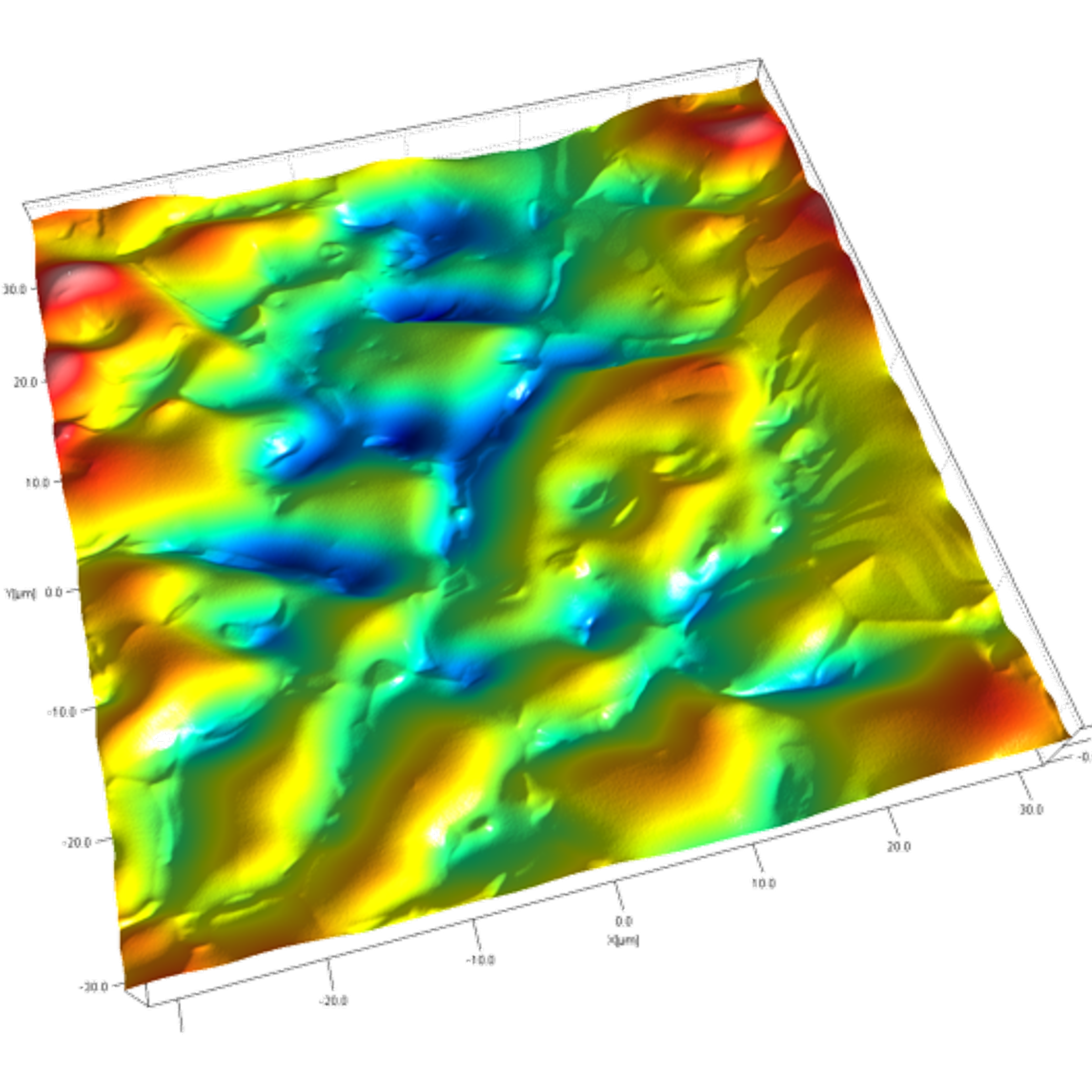HT BSE detector
Imaging and measurement of surfaces in-situ and at high temperatures
Electrode-based detectors are specially designed for in-situ High Temperature experiments where conventional detectors cannot be used. This is, because light and thermal electrons emitted by the hot sample easily saturate the electronics, and because the unavoidable contamination from the in-situ conditions limits the lifetime of delicate sensors.
In this new design of the point electronic HT BSE Detektors, BackScattered Electrons (BSE) are absorbed in robust electrodes (metal plates) placed at the detection plane, the resultant absorbed current is preamplifier in-situ, and then amplified and mixed further ex-situ. Secondary and thermal electrons are repelled away, as a bias voltage is applied to the electrodes through the detector galvanic isolation. Light, either emitted from the hot sample, or scattered from a laser heater, does not produce signal in such technology, the detector is inherently light-blind.
Electrodes can be coated in various materials to optimise absorption efficiency at particular energy ranges, e.g. Carbon coating for higher acceleration voltages, and can be easily disassembled, cleaned and recoated.
Of course, four quadrant electrodes are used to enable 3D surface analysis when combined with our calibrated SEM scan controller (DISS6) and Topographic reconstruction software.
Quadrant electrodes
- Four metal electrodes with carbon coating
- Each electrode with own in-situ preamplifier
- Adjustable bias voltage applied to all
- Size and geometry adapted to SEM model
Easy to clean
- Entire detector front end is easily removed
- Electrodes can be cleaned and recoated as needed
- Screws are used for easy on-site disassembly
- Various electrode coatings may be reapplied
High Temperature
- Electrodes are blind to light emitted by hot samples
- Thermal electrons are filtered using the detector bias
- Maximum temperature limited only by radiative heating
- Compatible with laser heating
Quantitative measurements
- Electronic gains, offsets and bias are factory calibrated
- Amplification is temperature stabilized
- Current collected into sensing electrodes is measured
(when combined with calibrated Scan controller for SEM (DISS6) and COMPO calibration sample)
Surface analysis
- TOPO and COMPO mix is done in the detector hardware
- 4Q signals are designed for topographic reconstruction
- Surface height/topography is measured
(when combined with Scan controller for SEM (DISS6) and TOPO calibration sample)
> learn more about the specifications

Quantitative BSE
- map density with high-spatial resolution, even at high temperatures
- characterise phase transformation across a wide temperature range
- observe nucleation and growth of nano-materials

BSE Topography
- Analyse 3D surfaces and complex surfaces
- Monitor in-situ reactions, including high-temperature
- Distinguish between shape and density transformations
Sensors
- 4x quadrant electrodes Carbon coated
- typ. 5 mm inner diameter typ. 25 mm outer diameter
- -10...10 V voltage bias
Preamplifiers
- 4x mounted in-situ
- Galvanic isolation
- 5x107 V/A
- 50 kHz bandwidth
Main amplifier (MICS-4)
- 4x independent signal channels
- -1.25 … 1.25 V (-50…50 mV with attenuator) input offset
- 1x … 1,800x gain
- -1.25 … 1.25 V output offset
- 3.4 MHz…34 Hz low-pass filter
- Automated 4Q global brightness and contrast
- Automated input offsets (dark correction)
- Automated gain normalization (bright correction)
- COMPO hardware mix signal (sum of BSE1...BSE4)
- TOPO hardware mixed signal (mix of BSE1...BSE4)
Mechanics (LIMA)
- Port mounted, with vacuum bellows
- Motorized insertion/retraction motion
- -4...4 mm manual lateral and height alignment
- 10 µm repositioning step size
- Integrated touch alarm, with automatic stop and retraction
- Passive cooling
Interfaces
- 1x USB 2.0 for amplifier control
- 1x USB 2.0 for motion control
- 1x RJ45 signal outputs
Signal Outputs
- Independent BSE1...BSE4
- COMPO (sum of BSE1...BSE4)
- TOPO (mix of BSE1...BSE4)
Software - Control
- Detector drawing with selectable quadrants
- Bias, brightness and contrast controls
- Individual quadrants, or grouped COMPO/TOPO control
- Automatic go to inserted/retracted positions
- Fine repositioning/adjustments in mm units
- Windows 11 … Windows 7
Software - In-situ Automation
- XML file format open/save settings
- JSON/RPC interface for remote control
- Automated brightness and contrast
